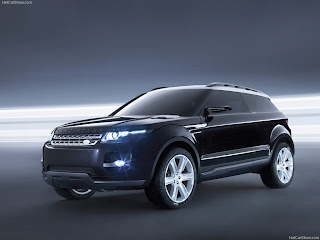
The new Lexus LFA marks an important moment in both the history of Lexus and the development of the supercar. A true "clean-sheet" design, the Lexus LFA was created by a small, passionate and dedicated team of engineers whose achievement has been to push the boundaries of technologies materials and engineering at every stage to produce a car like no other to have carried the Lexus badge.
Constructed using advanced carbon fibre technology, the rear-wheel drive Lexus LFA is powered by a bespoke, high-revving 552bhp 4.8-litre naturally aspirated V10 engine, matched to a rear-mounted six-speed sequential automatic transmission, giving 200mph-plus performance.
In the words of Chief Engineer Haruhiko Tanahashi: "The Lexus LFA is a thoroughbred supercar, a machine engineered to achieve a single goal - to deliver a supreme driving experience. Over the past decade we have pushed every boundary in pursuit of this goal and I believe we have created the most driver-orientated car we possibly could.





















TECHNICAL SPECIFICATIONS
* ENGINE
o Engine Type: 1LR-GSE
o Cylinders/arrangement: V10
o Valve mechanism: 40-valve DOHC
o Displacement: 4,805 cc
o Bore x Stroke: 88.0 x 79.0 mm
o Compression ratio: 12.0:1
o Fuel Injection Type: EFI
o Octane Rating : 95 or higher
o Max. Power: 552 bhp @ 8,700 rpm
o Max Torque: 480 Nm @ 6,800 rpm
o Max. engine speed: 9,000 rpm
o Exhaust emissions certification: Euro 5
* PERFORMANCE
o 0-62 mph (0-100 km/h): 3.7 s
o Max. speed: 202 mph (325 km/h)
* DIMENSIONS
o Overall length: 4,505 mm
o Overall width: 1,895 mm
o Overall height: 1,220 mm
o Wheelbase: 2,605 mm
o Track
+ front: 1,580 mm
+ rear: 1,570 mm
o Overhang
+ front: 940 mm
+ rear: 960 mm
o Coefficient of Drag: 0.31 Cd
o Fuel tank capacity: 73 l (16.1 gallons)
* WEIGHTS (kg)
o Kerb weight: 1,480 - 1,580 kg
o Gross vehicle weight: 1,700/1,750 kg
* TRANSMISSION
o Gearbox type: 6-speed Automated Sequential Gearbox
o Front counter gear ratio: 1.259
o Gear ratios
+ 1st: 3.231
+ 2nd: 2.188
+ 3rd: 1.609
+ 4th: 1.233
+ 5th: 0.970
+ 6th: 0.795
o Final drive ratio: 3.417
o Maximum permissible speed
+ 1st: 52 mph
+ 2nd: 76 mph
+ 3rd: 104 mph
+ 4th: 136 mph
+ 5th: 172 mph
+ 6th: 196 mph
* BRAKES
o Front: Cross-drilled ventilated discs, 399 x 34 mm
o Rear: Cross-drilled ventilated discs, 360 x 28 mm
* SUSPENSION
* Front: Double wishbone with anti-roll bar
* Rear: Multilink with anti-roll bar
* STEERING
* Steering gear type: Rack and pinion
* Power steering type: Electric
* Ratio: 14.3
* Turns lock to lock: 2.35
* ELECTRICAL SYSTEM
* Battery capacity: 12V-48AH
* Alternator output: 2,640 W
* Starter output: 1.7 kW
*TYRES AND WHEELS
* Wheels
* Front: 20x9.5J BBS alloy
* Rear: 20x11.5J BBS alloy
* Tyres
* Front: 265/35R20 95Y
* Rear: 305/30R20 99Y




































